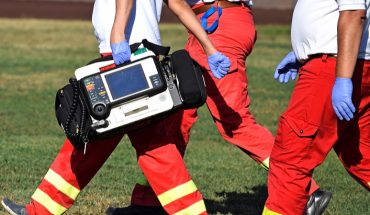This week, from the 2nd to 9th November, marks Radon Awareness Week in the UK and the campaigns’ primary goal is to raise the public’s awareness and knowledge of what radon is and the risks it presents to our health. 2020 has been a year when lung health has been in the spotlight due to the coronavirus pandemic and as Zak Bond of the British Lung Foundation recently commented, “Now more than ever before we have all become aware of how important it is to look after our lungs”.
Every home has a smoke detector, but how many homeowners measure the radon levels where they live? As more people die from radon than house fires, every home should have a radon detector. House fires claim the lives of an average of 200 people each year in the UK, while 1,100 lung cancer deaths per year are linked to radon. High levels of radon can be found in buildings of any type, size or location with occupants unaware of the potential danger unless it is being monitored.
The radon map is collated by Airthings and based on data sourced from its devices. The map shows that areas highlighted in red such as Wales and the South-West of England are at risk of being exposed to high-levels of radon. Other parts of the country most likely to be exposed include Cumbria, Newcastle, and Northumberland, while areas in Scotland and Northern Ireland are also under threat. Similarly, the Cotswolds was recently dubbed a radon hotspot.
As radon is a naturally occurring gas which is the result of uranium from the Earth’s crust decaying, we are all exposed to it on a daily basis. This isn’t a problem when it’s inhaled in the open air but the radon concentration within buildings is often much greater than outside. With closed windows and more airtight buildings, radon is captured and contained in our homes, resulting in levels that we seldom find in nature. Exposure over long periods of time can have adverse effects on our health. Properties in the South-West are particularly vulnerable to this as high levels of radon are in the region due to the large amounts of granite that can be found there. Similarly, the other areas of the UK highlighted by Public Health England are exposed to higher levels of radon due to the type of soil and rocks in the ground which properties have been constructed on.
The UK Homes Act which came fully into force in March 2020 makes landlords responsible for many things that ensure the properties are fit for human habitation, including radon levels, and applies to all rented properties – both those rented from private landlords or from local authorities (including social housing). Airthings’ indoor air quality monitors can detect indoor air pollutants such as radon, airborne chemicals (VOCs), mould risk, temperature, humidity and pressure.
Regardless of whether you live in what is deemed as a ‘high-risk’ or ‘low-risk’ radon exposure area, you should still take steps to safeguard your home, your family, and your health. Indoor air quality monitors such as Airthings’ are easy to install and allow you to monitor and keep track of the radon levels in your home over the course of weeks, months, and even years. While Public Health England recommends conducting a three-month radon test in your property as a minimum, it is advisable to monitor radon levels continuously, as these fluctuate over time and are influenced by the elements in our environment. If worrying levels of radon are found, you can then take swift action to reduce the amount of it in your home by:
- Checking for and sealing up holes and cracks in your home’s foundations
- Regularly opening windows and doors, and;
- Installing vent pipes
- Monitoring radon to ensure levels stay low
The only way to know if there is radon in your home is to monitor the air. There are several options available, from single-test kits to digital detectors, but it’s important to note that radon levels fluctuate over time and are influenced by the elements in our environment. Monitoring over long periods of time allows for such fluctuations to be accounted for, giving you more accurate and meaningful results.
Airthings, a global authority in indoor air quality and producer of the best-selling digital radon detectors for homeowners, has introduced the Wave Plus indoor air monitor into the UK market which not only measures the radon levels in a home but also has CO2 and airborne chemicals [VOC‘s] detector with temperature, humidity and air pressure sensors. The Airthings Wave Plus fundamentally changes the way radon is measured by using digital sensors and smart home technology. This allows for the unique combination of real-time radon levels and long-term measurement, which is crucial for health and wellness.
The Airthings Dashboard provides a quick and easy way to view a room’s indoor air quality data with alerts and tips to reduce air hazards, optimise ventilation leading to the potential saving on energy costs. The Wave Plus comes with a free mobile app which is simple and easy to set up and brings indoor air quality data and radon levels to the user’s fingertips. Versatile for offices, schools, homes or any public space, the Wave Plus is a great addition for recognising what could be impacting indoor air quality and the resolutions to put in place.
The Airthings Wave Plus is available for £239 from Airthings.com and Amazon
- Combination of drugs could prevent thousands of heart attacks - 21st April 2025
- UQ Study Links Poor Teen Diets to Heavy Social Media Use - 21st April 2025
- Gut microbiome could delay onset of type 1 diabetes - 3rd April 2025






